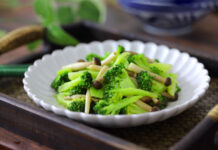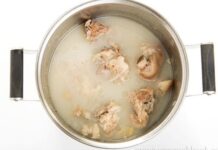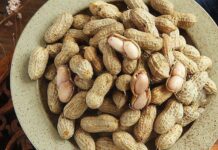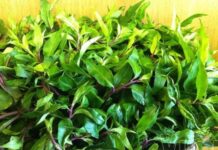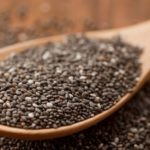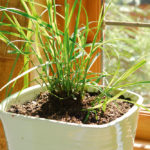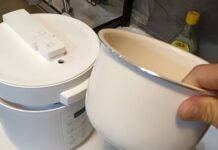Vietnamese people are accustomed to using basil in various dishes. But can you distinguish between basil, also known as mint or sweet basil, and other types of basil? In the following article, we will explore what basil is and its health benefits, as well as how to differentiate it from other types of basil.
1. About Basil
What is Basil?
Basil, also known as mint basil or sweet basil, is an herb belonging to the Labiatae family, similar to Thai basil, with the scientific name Ocimum basilicum. It is native to Asia and Northeast Europe. In Vietnam, it is a specialty of Lang Village, Dong Da District, Hanoi, and thus it is also known, albeit less commonly, as Lang basil.
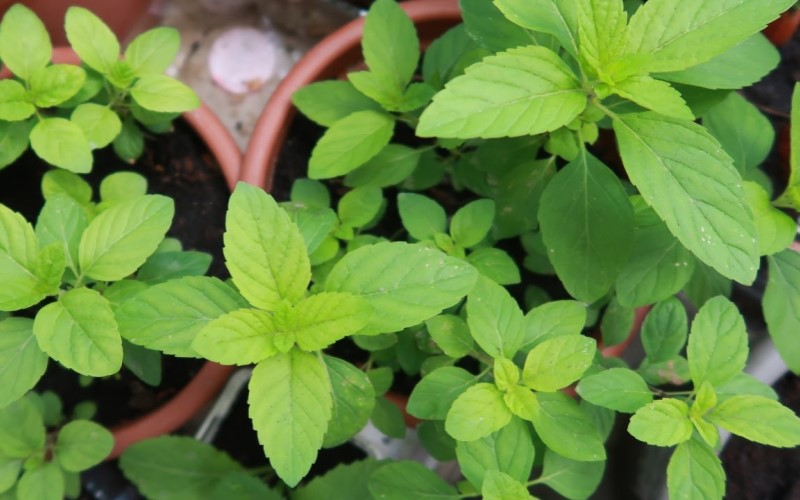
Basil usually grows in low bushes, reaching a maximum height of about 40 cm. Its stem has a purplish hue. The leaves are light green and slightly wrinkled, growing in opposite pairs with serrated edges and a covering of fine hairs. They are oval-shaped with pointed tips and have a distinctive, mild fragrance. Basil flowers are pale purple and grow in the leaf axils.
Nutritional Value of Basil
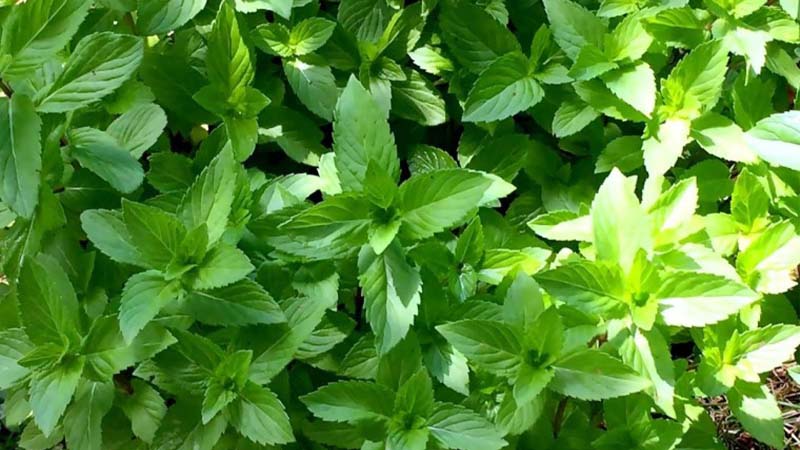
According to the United States Department of Agriculture, the nutritional value of 100 grams of fresh basil is as follows:
- Energy: 22 kilocalories
- Carbohydrates: 8.41 grams
- Fat: 0.73 grams
- Protein: 3.29 grams
- Iron: 11.87 milligrams
- Manganese: 1.118 milligrams
- Copper: 0.240 milligrams
- Potassium: 458 milligrams
- Riboflavin: 0.175 milligrams
- Pyridoxine: 0.125 milligrams
- Vitamin C: 13.3 milligrams
- Pantothenic Acid (Vitamin B5): 0.061 milligrams
- Vitamin B6: 0.041 milligrams
- Folate (Vitamin B9): 3 g
- Vitamin A: 4.6 milligrams
Different Types of Basil and How to Distinguish Them
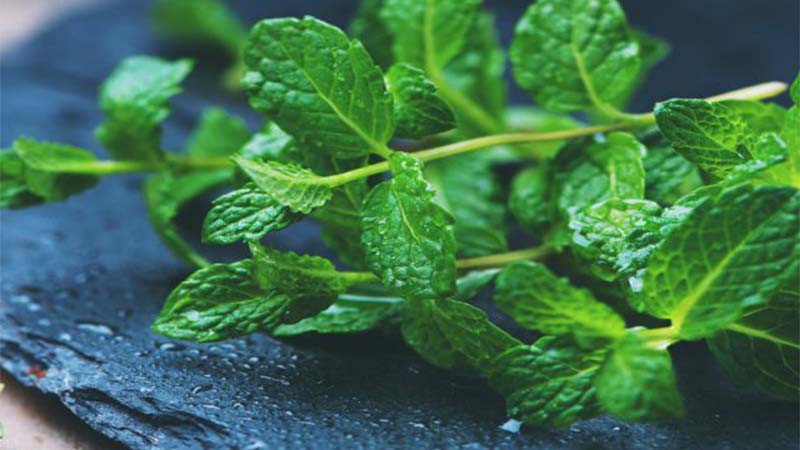
In addition to basil, there are numerous other types of basil, such as Thai basil, lemon basil, and holy basil. However, many people may find it challenging to differentiate between them when shopping. Here’s how to tell basil apart from Thai basil and lemon basil:
Thai Basil
Thai basil, also known as hot basil, can be instantly distinguished by its distinctive fragrance, resembling cinnamon and cloves. Thai basil also grows in bushes, reaching a height of 40-60 cm. Its leaves are elongated and dark green, growing symmetrically on opposite sides.
Unlike basil, Thai basil leaves are smooth and hairless, with a continuous edge instead of serrations. However, its stem is covered with fine hairs. The flowers are typically purple, although they can also be white.
Thai basil is commonly used in dishes like pho and spring rolls to enhance their flavor. It is also used to season grilled dishes like grilled pork and BBQ, as well as salads.
Lemon Basil
As its name suggests, lemon basil exudes a refreshing lemon fragrance. Its stem is covered with fine, silky white hair, and it grows to a height of 20-40 cm. Lemon basil leaves are narrowly ovate and elongated, with serrated edges, but they are thicker, crisper, and have a finer layer of hair compared to basil.
The flowers are white. Lemon basil is often used to marinate fish and meat to eliminate their unpleasant odors effectively, and it is also used to make a syrup to treat coughs associated with colds.
Holy Basil
Holy basil is another variety of sweet basil. Unlike basil leaves, which are elongated, holy basil leaves are somewhat round and smaller, with a fresh green color, growing symmetrically opposite each other and featuring serrated edges. Its stem is purplish-brown, with short internodes of about 2 cm in length.
Holy basil resembles peppermint (Mentha × piperita) leaves, but peppermint leaves are darker and have a fine layer of hair on both sides, while holy basil leaves do not.
How to Choose the Best Basil
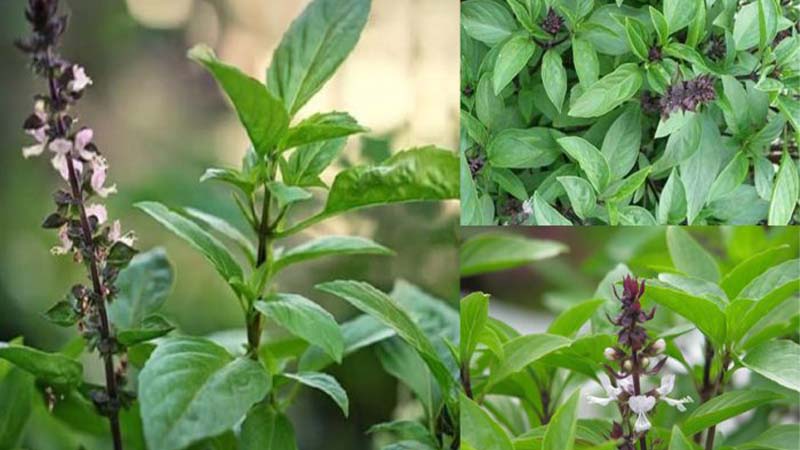
When selecting basil, choose leaves that are smooth, fragrant, bright green, and free from black spots. Avoid wilted Thai basil with mold.
2. Health Benefits of Basil
Due to its distinctive fragrance, basil is often used as a garnish to enhance the flavor of dishes such as pho, spring rolls, and salads.
Additionally, basil is a nutritious herb rich in minerals, vitamins, antioxidants, carotenoids, vitamin B9, flavonoids, and essential oils. As a result, it offers various health benefits:
– Treats the Common Cold: Basil is rich in vitamin C and potassium, which boost the immune system and help fight off colds effectively. In traditional Vietnamese medicine, a concoction of basil, chrysanthemum flowers, apricot kernels, and angelica roots is an effective remedy for the common cold.

– Treats Insect Bites and Allergies: The essential oils in basil have antibacterial properties, so applying crushed basil to insect bites or allergic skin can help reduce swelling and itching.
– Repels Insects: The distinctive fragrance of basil effectively repels harmful insects like mosquitoes.
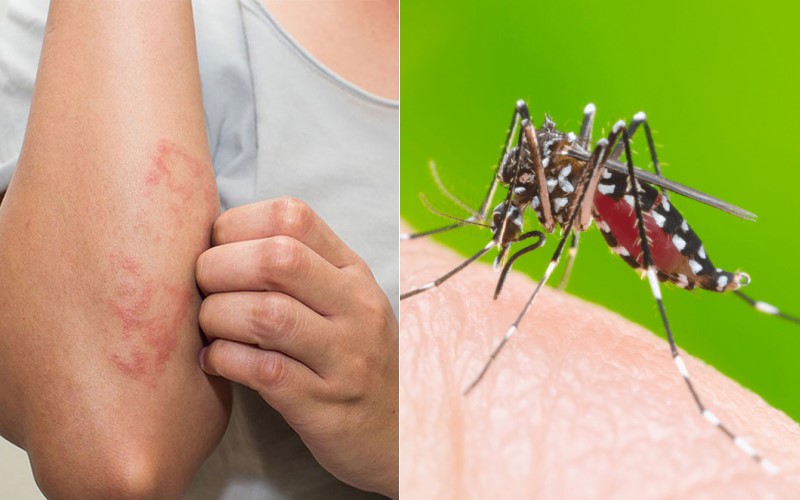
– Benefits Digestion: Basil is excellent for those suffering from flatulence, indigestion, and nausea, as it contains a compound that stimulates bile secretion and aids digestion. Additionally, carvone, a compound found in basil, has a strong inhibitory effect on gastric spasms, thereby improving digestive disorders.
– Treats Bad Breath: The aromatic essential oils in basil help eliminate bacteria and bad breath safely and effectively. Regularly incorporating basil into your meals will significantly improve bad breath.

– Supports Respiratory Health, Especially Asthma and Sinusitis: Basil contains rosmarinic acid, which is effective in treating sinusitis. Inhaling basil steam for a week can improve respiratory conditions like asthma and sinusitis.
– Protects the Liver: Basil is rich in high-quality antioxidants such as rosmarinic acid, flavones, and flavanones, which combat the effects of free radicals and provide excellent protection for the liver.

– Treats Acne, Fades Dark Spots, and Brightens Skin: The antioxidants in basil are an effective remedy for fading dark spots and brightening the skin. Additionally, the antibacterial essential oils help reduce acne.
– Relieves Stress: According to the Suc Khoe & Doi Song (Health & Life) newspaper, the aromatic essential oils in basil help reduce stress. Drinking basil tea every night, in addition to using it in meals, will give you a deeper sleep and make you feel more refreshed in the morning.

Important Note: Pregnant women should refrain from consuming basil, as it stimulates gastric and uterine contractions, which can lead to miscarriage.
3. Delicious Dishes with Basil
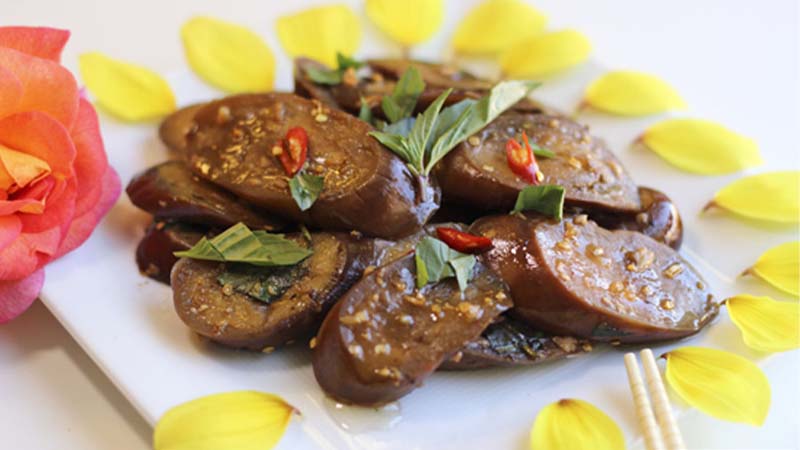 Eggplant Stir-fried with Garlic and Thai Basil
Eggplant Stir-fried with Garlic and Thai Basil
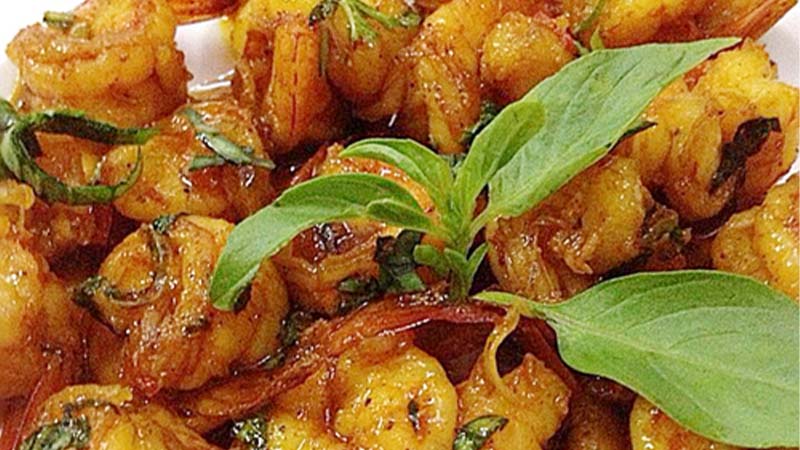 Shrimp Stir-fried with Thai Basil
Shrimp Stir-fried with Thai Basil
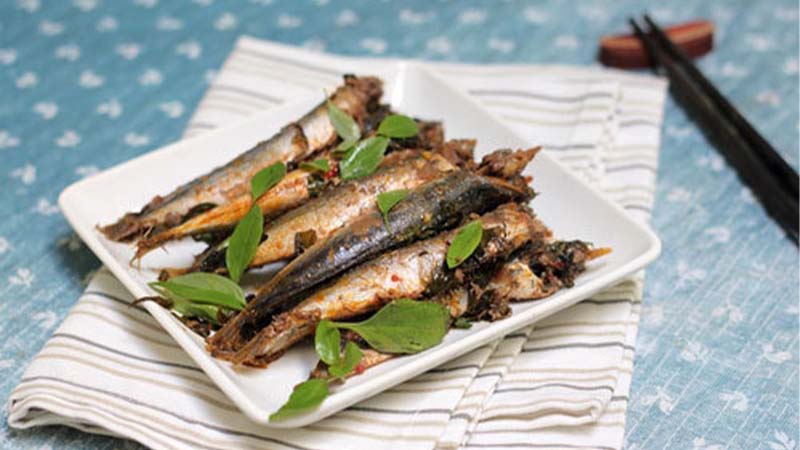 Stewed Mackerel with Thai Basil
Stewed Mackerel with Thai Basil
4. Precautions when Cooking and Eating Basil
While basil offers numerous health benefits, there are a few considerations to keep in mind during its use:
- Choose clean basil.
- Avoid using basil in sour soups, as it can increase uric acid levels in the blood, causing pain and discomfort for those with gout.
- Excessive consumption of Thai basil can lead to an overdose of eugenol, its primary active component. This can cause symptoms such as coughing, rapid breathing, and blood in the urine.
In conclusion, basil, or as it is locally known, is a versatile herb with numerous health benefits and culinary applications. We hope that this article has helped you understand this wonderful plant and how to distinguish it from its “sibling” basil varieties. Incorporate basil into your diet and enjoy its delicious flavor and numerous health benefits!
Sources: Suc Khoe & Doi Song (Health & Life) Newspaper, United States Department of Agriculture
16 Best Houseplants to Keep Mosquitoes Away
Having to deal with pesky insects such as flies and mosquitoes is something that most of us have probably experienced. Not only do these troublesome critters cause unsanitary spaces, they can also spread infectious diseases. While insecticides do the job, why not try something a little different and opt for plants to repel these insects while adding to the aesthetics of your home? Read on to learn more about the following plants that could help.











